9+ SAMPLE Business Visit Report
-
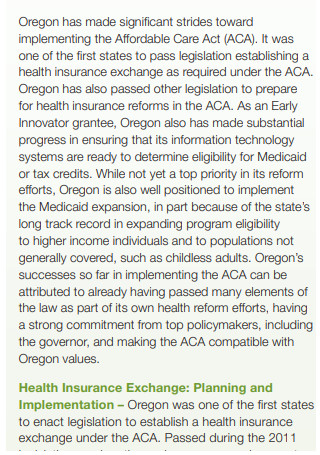
Business Visit Report
download now -
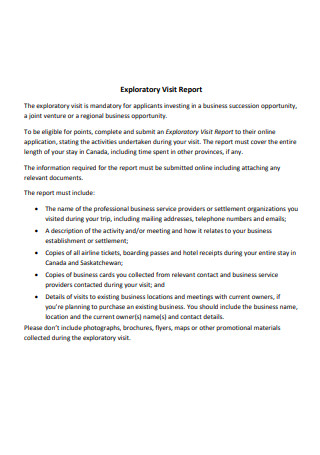
Business Exploratory Visit Report
download now -

Business Supplier Visit Report
download now -

Business Visit Report Format
download now -
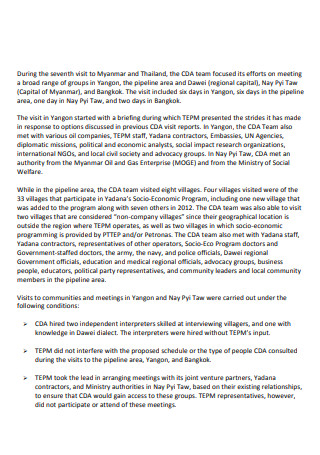
Business Field Visit Report
download now -
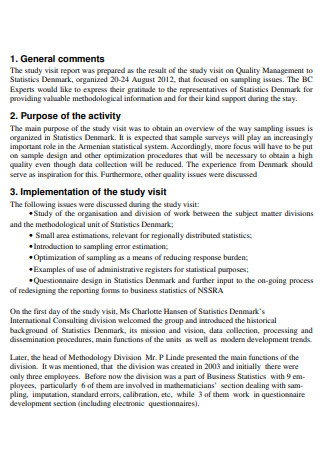
Business Study Visit Report
download now -
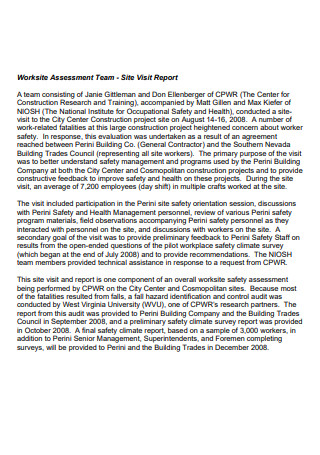
Printable Business Site Visit Report
download now -
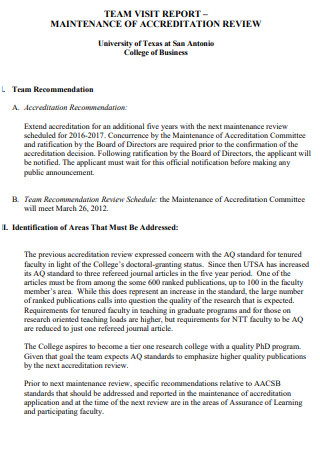
Business Team Visit Report
download now -
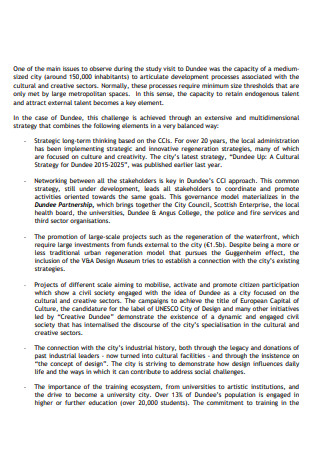
Formal Business Visit Report
download now -
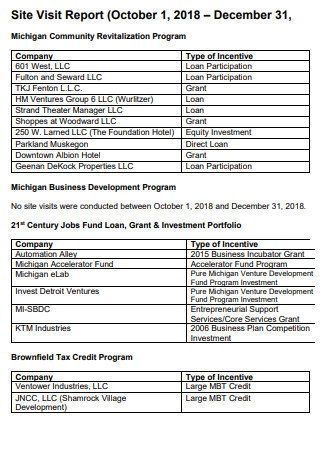
General Business Visit Report
download now
FREE Business Visit Report s to Download
9+ SAMPLE Business Visit Report
What Is a Business Visit Report?
Elements of a Report
How to Write Business Visit Report
Trends in Business Travel
FAQs
What is the purpose of a site visit report?
What is a monitoring visit report?
What is the best way to write a report for a school visit?
What Is a Business Visit Report?
A business Visit Report may assist you to capture the procedures and operations at an industrial or business facility, most especially as a professional. These reports are easy to understand and have a generally easy-to-follow format. You would need to describe the location and what you did while you were there during the visit. Additionally, consider what you learned throughout your stay and type it out in a report. This article provides you with a business visit report template so you can be better guided through the process of writing it out. Keep reading below to know more about the elements and structure of a business visit report.
Elements of a Report
Before digging into teaching you through the steps in writing a business visit report, it is essential for you to be aware of the key elements of what makes a report. The aforementioned elements are not only necessary but also play a role in collectively storing relevant information found in a report. You can view the sample business visit report format if your company has not provided one for you.
How to Write Business Visit Report
A business visit report is one of the most dependable ways to measure how well a business is doing. You are able to measure your external activities and their performance. You can establish whether a wide range of Business objectives are being accomplished by creating a complete business visit report. They are a wonderful method to see if your company standards are being followed on the ground in the way you intended. Although a business visit report format may depend on the company you are working for, if they already have one, then utilize it to stay uniform with the other reports they have collected. Otherwise, keep reading the article to be guided in writing your own as well as check out the available business visit report examples.
Step 1: Format the Report Clearly
Business visit reports are papers that are used in the business world. The report may use a memorandum format or a business template, depending on the Organization or sector. If the visit report is going to a group of internal leadership people, use a memo format. If the visit report will be shared with others, choose a more official business report template. Use professional type typefaces that are readable, avoid cursive fonts and make sure the font size is clear. Maintain a 1-inch margin on all sides.
Step 2: Declare the Objectives
Explain why you have come to see the particular business site. The frequency of the visit, as well as major metrics or review areas, are all included in the objectives. The visit, for example, may be the first of four planned over the course of a year to assess the application of new rules or production measures. Clearly outline your objectives for the visit, including past visits, suggestions, and action plans.
Step 3: Talk about the Feedback and Insights
Take note of the names of significant people you spoke with during your visit. Meetings with important leadership persons at the location, such as managers or directors of operations, may be part of the visit. Meetings with lower-level Employees who are more familiar with operational processes are also prevalent. Discuss crucial input from management and workers. It’s not necessary to paraphrase those questioned; instead, seek significant takeaways and common concerns. Include any standardized surveys or a series of questions that were asked during the visit.
Step 4: List out Observations
Observations are based on what the author has directly witnessed rather than what has been transmitted through interviews. Visitors may notice if the operation appears to have an excessive number of personnel who are not being kept busy. Observations are made on everything from cleanliness to the basic organization. Incorporate these observations into the visit report.
Step 5: Provide a Summary of your Conclusions
Based on the feedback and observations, determine if the organization is fulfilling its objectives. Wherever feasible, include details and quantitative data to back up your conclusions. If the goal of a visit to a new plant is to see if it was 60% staff in the first quarter, offer the real human resource data, including turnover, existing recruiting activities, and areas with gaps.
Step 6: Supply an Action Plan for the Future
If any future trips are planned, specify whether they are prearranged or the consequence of the most recent visit. This may have been the third yearly visit on a Quarterly basis, for example. Provide suggestions for enhancements. If specific action plans have been established, describe them in detail. This serves as a marker for the following visit’s success.
Trends in Business Travel
It’s critical for hoteliers and others in the Travel industry who want to profit from the rise of business travel to stay on top of the newest innovations. Find out more about eight of the most recent business travel trends, as well as how they are affecting the industry as a whole, in the sections below.
FAQs
What is the purpose of a site visit report?
Observing facilities, engaging with staff and students, accessing documents, scrutinizing concrete proof of student achievements, and verifying the authenticity of self-assessment claims are all goals of site visits. Although a site visit report may vary in terms of location, the main point of purpose to gather information regarding the site and handing it over to a supervisor stays the same. A company visit report sample is provided for you to view at your preference.
What is a monitoring visit report?
The monitoring visit report serves a variety of important reasons, depending on the type of monitoring visit. It’s where all of the findings from monitoring visits, as well as the status of discoveries from earlier visits, are noted.
What is the best way to write a report for a school visit?
Try dividing it into five paragraphs. Introduce your visit and why you took it, but don’t go into too much detail. Explain where you went and when you went in the next paragraph. Include factual facts as well as any expectations you had before the trip. Write about what you loved best about the trip in the third part. Include some more sights you observed in the fourth paragraph, as well as how your friends or peers responded to the trip. After that, write a brief conclusion on what you learned on the trip.
A business development visit report is essential for any business to review their locations for any issues that may need addressing. But also acts as a means to provide maintenance to ensure the overall quality of the business area. If you are satisfied with the knowledge that has been presented before you, try checking out the business site visit report template as you write your report.
